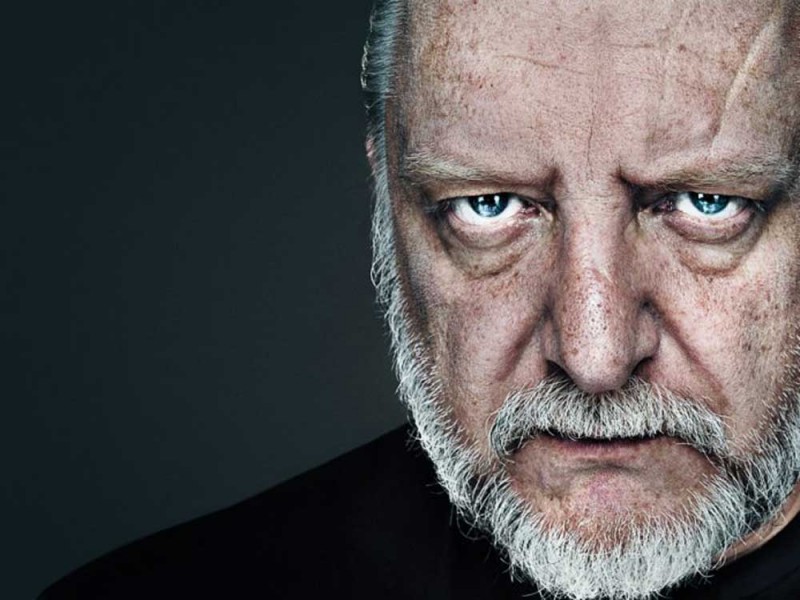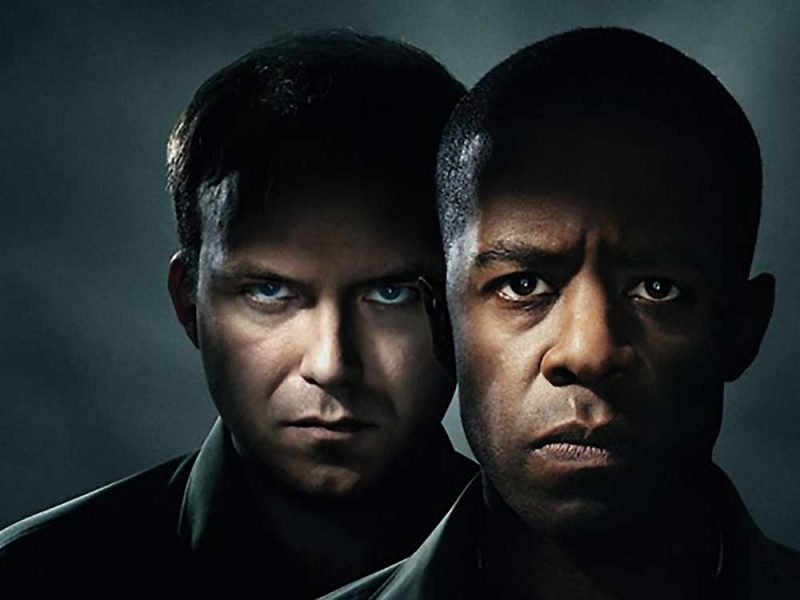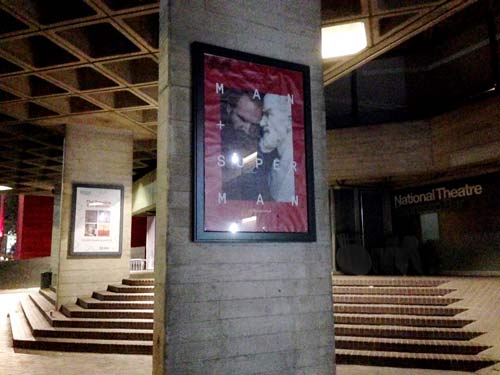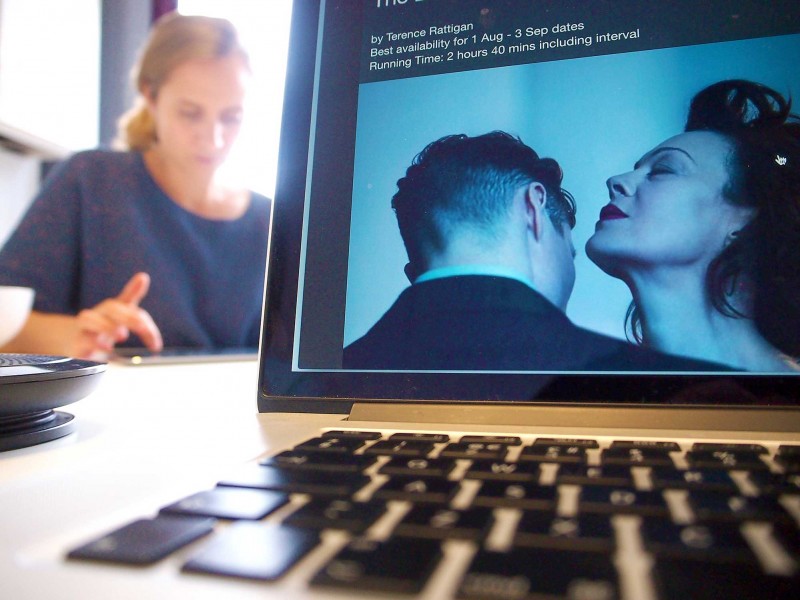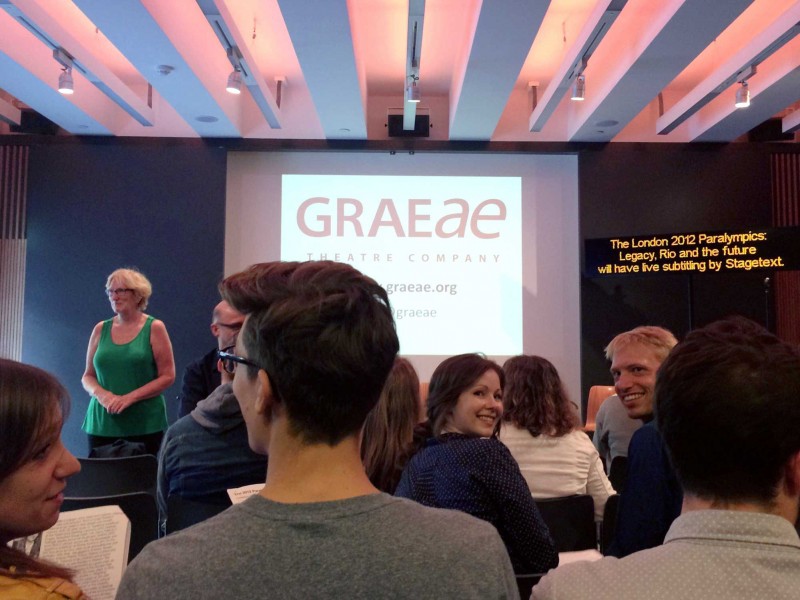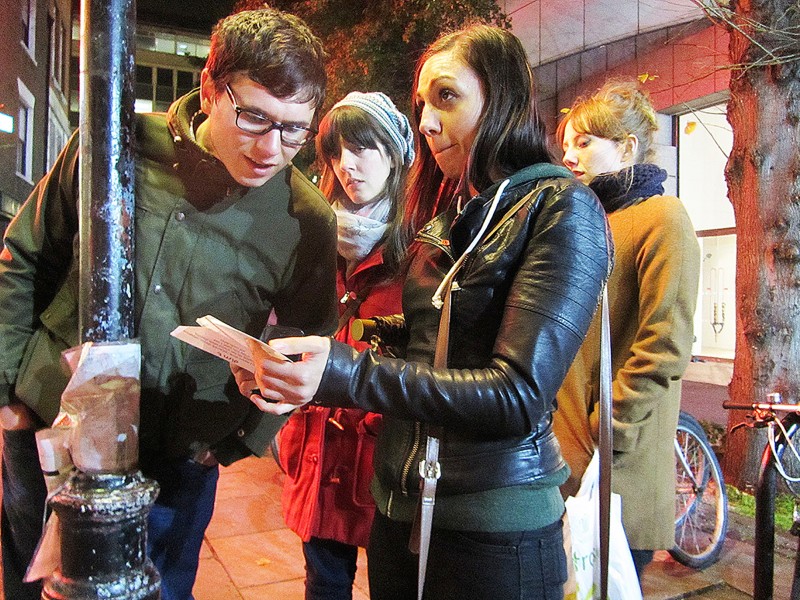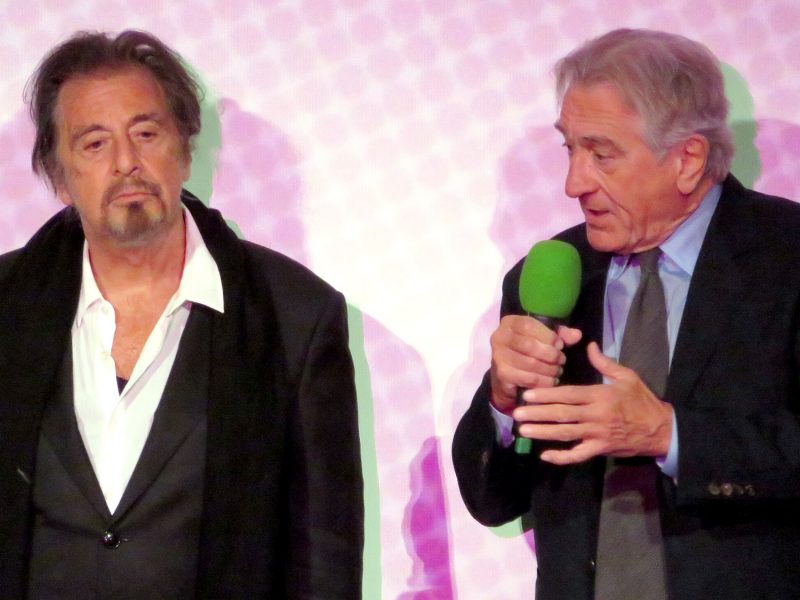David Hare has adapted Georges Simeon’s ‘La Main’ for his latest directorial foray at The National Theatre. Mark Strong, Hope Davis and Elizabeth Debicki lead the cast.
The Red Barn at National Theatre
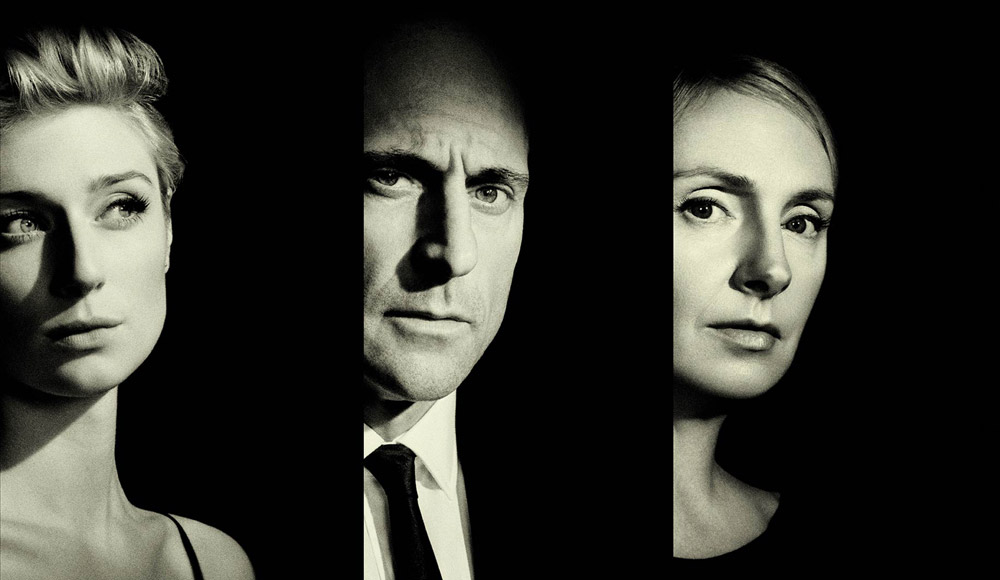
The genteel murmur of the National Theatre quietens to a hush and the theatre plunges to black. An small, intense square of light appears. It’s unexpected, disconcerting; we’ve got no visual reference to where it’s positioned in the darkness. The square grows until it’s filled with the image of an eye. We can’t tell how big it is until we realise that it’s a live projection from Ingrid Dodd’s (Hope Davis) ophthalmic examination. She’s in a chair dwarfed by her giant iris. The scene is over without the blink of an eye and we’re deep in the darkness again.
The next scene is a snowstorm. It’s made cinematically wide by raising the curtain no more than 10 feet from the stage. We can barely hear the four characters but we can almost feel the biting wind, whipping their faces, blowing horizontal snow, forcing them to hold hands so as not to lose each other in this zero visibility storm. It takes them an age to struggle from stage right to left until the scene is cut.
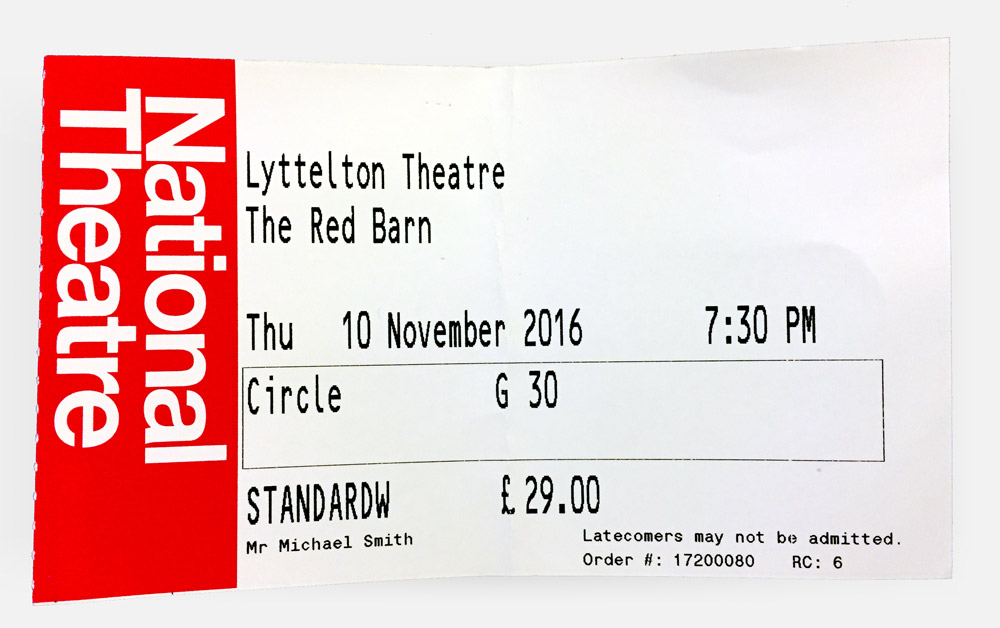
Seconds later our characters have made it to the port in their storm, the Connecticut house where Ingrid and husband Donald (Mark Strong) have set up home, far away from the city slicking lives of their friends. But one of the venturers is missing. Mona Sanders (Elizabeth Debicki) is missing her husband. He must have fallen behind, perhaps fallen in the snow. Ingrid sends her husband back out into the cold.
It’s a stunning start to a wonderful production created by Robert Icke with design by Bunny Christie. Normally if I end up talking about the staging it’s because there’s so little to say about the script or the acting. But not in this case. The Red Barn is an almost perfect blend of script, acting, direction and production. Even the publicity poster is wonderful (congrats to the design studio at National Theatre).
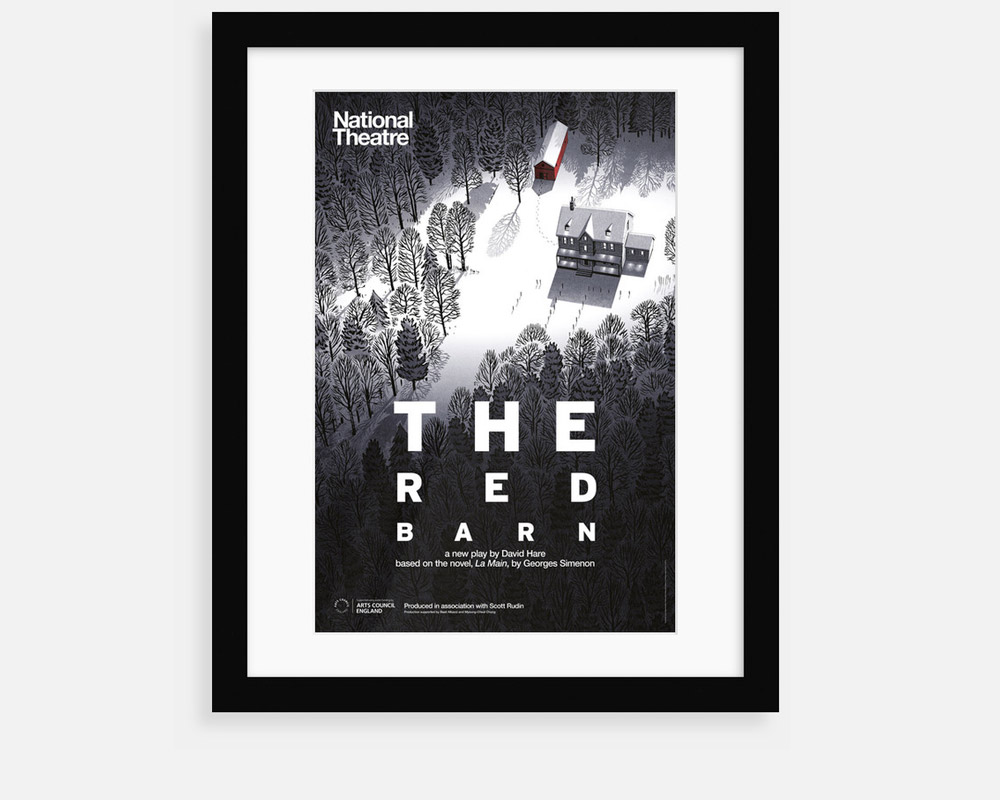
The Red Barn publicity poster © National Theatre
Told through flash-backs and jump-cuts, the scene-setting continues its cinematic form, sometimes Hopper-like (Edward as much as Dennis) in its framing and colouring. Occasionally the settings are revealed, to great dramatic effect, like comic strips with stage frames hidden and revealed to accentuate the plotting.
The dialogue is mannered and play-like. I really like that, but I can see why others have struggled with it. The characters don’t talk as much as trade in precious words. When Mona tells Donald, “I know what you’ve done”, her husband may not hear the significance in her words but David Hare knows that we all will.
In some places I’ve seen The Red Barn billed as a thriller. It’s not that (at least not in the sense they mean). This is the tale of a man being unwound, a man who slowly realises that he’s been following the tracks laid by his all-seeing wife. And by the time he realises, he’s in too deep.
I won’t reveal the ending but I can tell you that Sound Designer Tom Gibbons and Lighting Designer Paule Constable came into their own. I’ve never known such an intense chest-rattling ending to a play.



